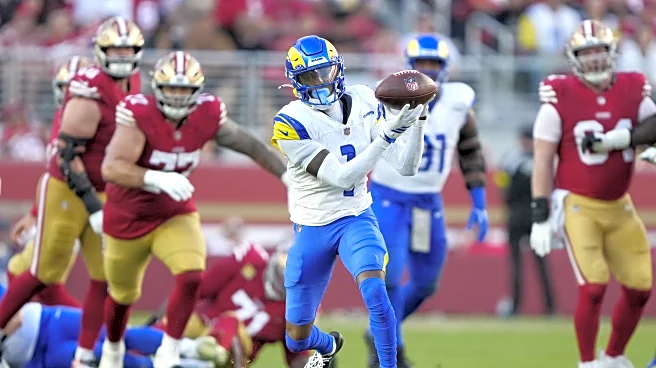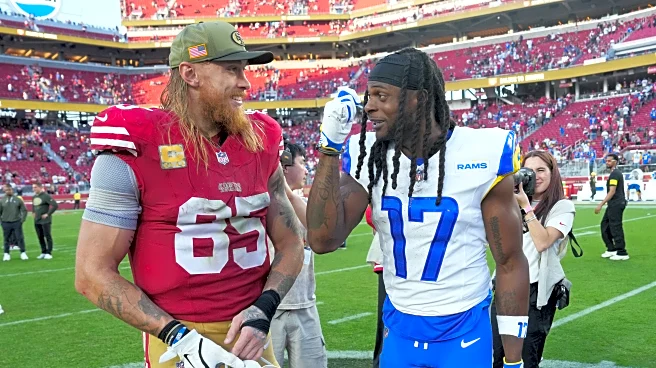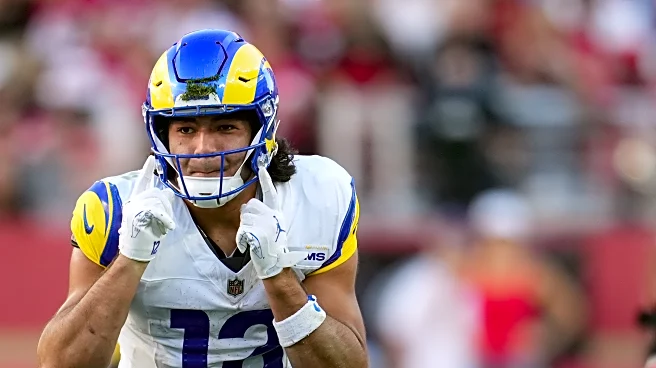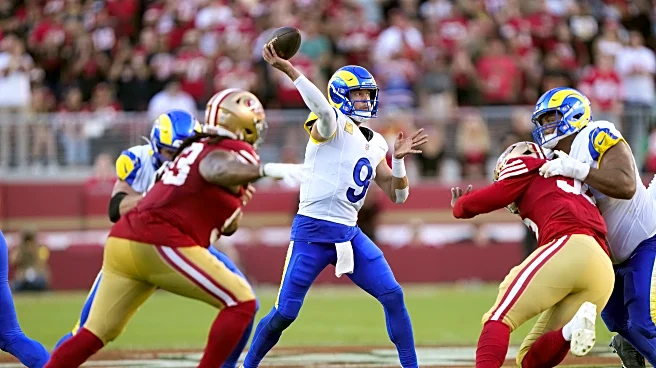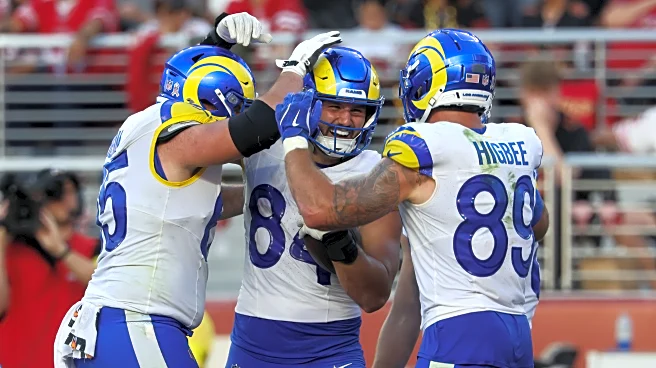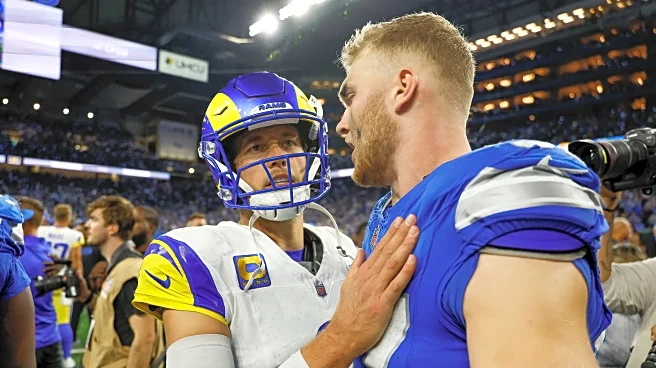After knocking off arch-nemesis, San Francisco 49ers, the now 7-2 Los Angeles Rams are rewarded with another NFC West face off. This coming Sunday, it’s the 7-2 Seattle Seahawks coming to SoFi Stadium
for a battle culminating in league supremacy.
Two weeks ago, during the bye week, I wrote about the Rams offense through the snap chart lens. Now it’s time to shed that same light on the defensive side.
Defensive line
At the beginning of the season, Rams defensive coordinator thought he had four starting-grade interior players and has used them as such. Although his stats are down, Kobie Turner (407, 67.6%) remains the cornerstone of the defensive line. Braden Fiske (310, 51.5%) has also shown a considerable drop in individual stats. Even though he’s getting less reps than in his previous years, Poona Ford (273, 45.3%) is on target for another solid season. Tyler Davis (243, 40.4%) has blossomed as a sophomore, at basically the half-way point of the slate, he’s matched all of his rookie year production. Ty Hamilton (69, 11.5%) was inactive in Week 1, but has had a handful of snaps in all the other eight. He’s played the way you would expect a Round 5 rookie to play. Like Hamilton, Larrell Murchison (61, 10.1%) has consistently provided work in the rotation and recorded a pair of sacks.
Edge
Much of thinking around Jared Verse (482, 80%) being quieter than last year is just how much he exploded onto the scene as a rookie. Although hurries and pressure percentage are down a little, all of his other 2025 numbers are on target to top last year, with missed tackles way down. Byron Young (477, 79.2) has provided the Rams with solid ROI for two and a half years and has another year on the books before he gets his payday. Plenty of discussion about who the Rams should extend, but a three-year deal/extension for Young should be at the top of the list. As the primary backup edge, rookie Josaiah Stewart (198, 32.9%) gets on the job training and enough reps to show off what he can do. The Rams are rewarding him by moving around the formation, his role mirroring that of the two bookend stars. Not many scraps left for Nick Hampton (64, 10.6%) and Desjuan Johnson (11, 1.8%).
Off-ball linebacker
It’s always interesting when a player with good production falls out of grace with a team. The Atlanta Falcons are not only on the verge of giving the Rams a Top 10 draft pick, but let a solid middle linebacker slip away to them. Nate Landman (557, 92.5) is that LB of the future. Just as important as production is his leadership. Omar Speights (330, 54.8%) is quietly building on his rookie year, although just getting back to full swing after an ankle sprain in the early October 49ers game, he’s on a path towards 100 tackles in 60% of snaps— strong production. Veteran Troy Reeder (46, 7.62%) and rookie Shaun Dolac (35, 5.8%) got most of their work in Speights’ absence, but are standouts on some otherwise poor special teams units.
Safety
The sum of Quentin Lake’s (602, 100%) play is better than its individual parts. He never leaves the field and has improved in each of four seasons in L.A. Kamren Curl (595, 98.8%) can be inconsistent in coverage at times, but is on his way to the best season total numbers of his career. Kamren Kinchens (424, 70.4%) has had a substantially bigger role on defense, he is arguably the Rams best safety, certainly their best deep cover guy and has shown an enforcer’s aggressive attack on the ball. Jaylen McCollough (212, 35.2%) gets about 20 reps per game and on a per snap basis, provides great production bang for the buck. Josh Wallace (32, 5.31%) is listed at safety, but also works at cornerback. His stats are on par with last years in half as many reps.
Cornerback
In his second year as a starter and his final on a rookie contract, opposing teams are attacking Cobie Durant (443, 73.6%) more often. While many of his numbers aren’t up to his past specs, he is still only allowing a shade over 50% of passes completed against him. Emmanuel Forbes (411, 68.3%) has been up and down. For him, getting good position is key, he has been “big-bodied” on numerous plays where he had pretty sticky coverage. On his stats page, numbers for Darious Williams (273, 45.3%) show like an All-Pro, but I see inconsistency in availability, coverage and tackling. He was clearly beaten for touchdown by the ’Niners yet it’s somehow not included in his stats. This is not the first time he’s been caught flat-footed and burnt. Roger McCreay (0, 0%) has not seen a defensive snap since joining the Rams.
With eight games to go
Against the run
Shoring up the run defense was atop the offseason to-do list. Last year, the Rams gave up 2210 yards on 477 carries for an average of 4.6 per carry and 130 per game. Extrapolating the 2025 numbers already allowed from nine games through the final eight would come to 1429 yards on 425 carries, 3.4 per carry and 84.3 per game. This outcome should be considered an unqualified success.
To simplify, it could be said that the Rams were in the second year of the David Shula defense and the additions of defensive tackle Poona Ford and linebacker Nate Landman set the stage. But there’s more to it, the Rams have a rock solid four-man rotation on the interior, staying fresh, keeping opposing offensive line’s hands full and not allowing molestation of the linebackers. The “big nickel” and “dime’ packages of 3 or 4 safeties on the field help out in the run game almost as much as the pass. Last, but not least, one of my favorite keys, the Rams controlling the flow of the game, not just time of possession, but forcing the opposition out of what they want to do and play at the Rams pace.
Against the pass
There’s a lot of buzz about the Rams pass rush, strangely enough about the lack of it. Sunday’s game vs. the 49ers wasn’t a particularly stellar performance, but overall Next Gen Stats has L.A. with a pressure rate of 35.9% thus far in 2025 compared to 35.6% for all of 2024. Pro Football Reference has a different scoring criteria and scores it at 22% this season and 21.4% in ’24. Getting home on sacks shows the Rams already at 27 through nine games and only 38 for all of last season.
While secondary coverage hasn’t been great, middle of the pack isn’t bad. The Rams are 9th in target separation allowed, 22nd in completions allowed, 16th in yards allowed, and 19th in average depth of target. Some of it can be attributed to scheme. The Rams are primarily a Cover3 zone defense and the weak areas in that defense are the seams and middle of the field, particularly in the mid-depth areas. It’s tough for linebackers (or box safeties) to get their drops quick enough to clog those passing lanes.
Bottom line
It’s all about scoring more than the other guys and the Rams have given up only 153 points (2nd in NFL), 17 per game. They get opponents off the field as well, allowing 33.3% of third down conversions (2nd), creating 14 turnovers (5th), and strangely enough, the Rams opposition have attempted to convert 28 4th downs (1st) and only succeeded at a 53.6% clip. (13th).



